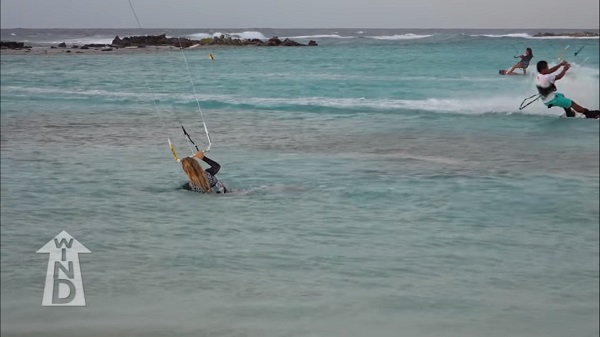Learning how to body drag is one of the first techniques you get taught in your kiteboarding lessons, after kite control. And it’s an essential skill to master and to keep practising.
Being able to body drag efficiently will enable you to retrieve your board quickly after becoming separated from it, thus saving time and energy when the inevitable wipe-outs happen.
But it’s also vital to be able to get back to shore if you unfortunately lose your board. This happened to me in Cape Verde a few years ago when I couldn’t find my board in fairly big waves and I was about a kilometre out (stupidly and an expensive lesson learnt). But I can honestly say it saved my life!
As with all my technique articles this is not designed to replace lessons from a qualified instructor. But hopefully it will remind you of the skills you were taught, which are easy to forget in the excitement of getting out on the water by yourself.
If you’re anywhere near the North of the United Kingdom, why not check out Northern Kites where you’ll find me teaching alongside the rest of the team whenever the wind is right.
So let’s look at the various things you need to know:
Video Courtesy of Alex at Kitesurf College
Timing
As soon as you become disconnected from your board you want to start body dragging, so that you can get back to it quickly.
And in most wipe-outs the board will be upwind of you, so it might take a few tacks upwind alternately to the left or right, rather than trying to drag directly upwind.
But the sooner you start body dragging, the less time it will take.
Don’t be tempted, as many people are, to park the kite at 12 o’clock and try to swim towards a board that is upwind of you. All that happens is that you act as an anchor and get slowly pulled downwind away from the board.
Kite Position
It’s important to have the kite in the right part of the window for body dragging. We’ll look at going downwind separately, but for dragging upwind or across the wind the kite needs to be at or near 45 degrees, or 10.30 on the clock face if you want to go left and 1.30 if you want to go right.
At this position the kite isn’t pulling you too hard that you can’t control your direction, and it also has the effect of supporting you at the right depth in the water, just near the surface, so that you can steer and keep your face out.
Body dragging downwind is easy. Just park the kite at 12 o’clock and then steer it left and right slightly in and out of the 12 o’clock position, to generate downwind power.
Trim
The de-power trim should be okay in the position it was before you lost contact with your board. But if the wind has picked up suddenly (which might be the reason you came off the board) you might need to pull on a bit of de-power.
You want to be able to control the kite easily and keep it in the ideal position.
Hand Position
Apart from dragging downwind, you need to have just your back hand on the bar, next to the centre line. You’ll be using the other arm and hand to steer you through the water. So to go left you need your right hand on the bar and vice-versa to go right.
To go downwind it’s best to have both hands on the bar so you can easily steer the kite left and right.
Body Position
Your steering arm, body and legs should form a straight line with your arm extended in the direction you want to go and your palm extended with your fingers closed together. This is effectively your rudder.
A common mistake people make is to try and kick or swim with their legs. This just causes resistance and tires you out.
Your head should be out of the water. If it isn’t then it’s likely the kite is too low in the window.
Angles
It’s important to understand that you can’t body drag directly upwind. The closest you can get is about 60 degrees from the wind direction.
You’ll know if you’re trying to go too far into wind as the resistance of the water will be pushing against your body rather than flowing along it.
If this happens then you need to bear away from the wind and be prepared to go past the kite and then turn and go back upwind in the other direction.
Turning
To go from left to right you obviously need to steer the kite back through 12 o’clock. But you need to do this slowly, otherwise you’ll get dragged back downwind as you steer the kite across.
Easing off on the bar will help with this move.
Body Dragging With Your Board
It’s actually quite effective to body drag whilst holding your board as the board helps steer you through the water.
Place the board flat on the water and hold onto either the grab handle or rear foot strap. Lean your elbow on the downwind edge of the board and make a straight line from your board to your toes.
Keep Practising!
My home beach has fairly shallow water at most states of the tide and, I have to admit, it’s tempting to just stand up and walk whenever I have a wipe-out.
But every now and then it pays to practise body dragging instead. You’re guaranteed to need the skill sometime and, like every sporting technique, regular practise creates “muscle memory” so that it becomes natural to go into the ideal body dragging position as soon as you need to.
I hope you’ve found this article helpful, and I love to get feedback and comments. So please let me know in the box below.
And don’t forget to check out my other articles on kit and technique
And if you hit the “follow” button you’ll get an email when I publish new articles. I guarantee no spam!


